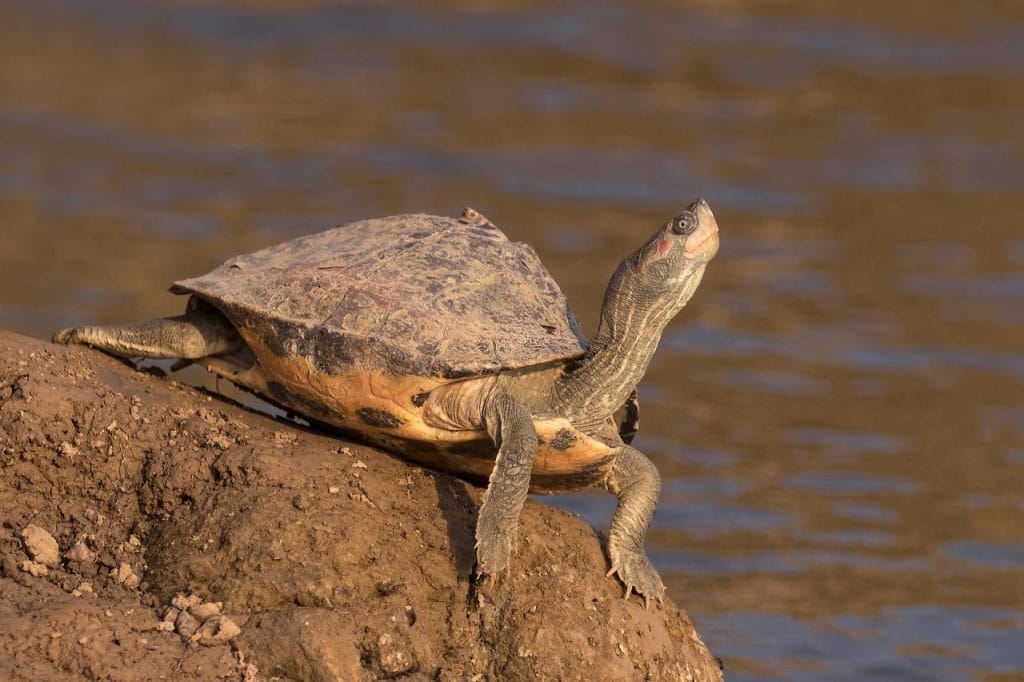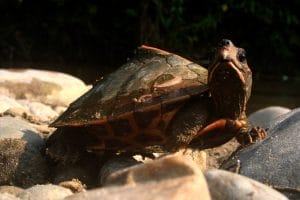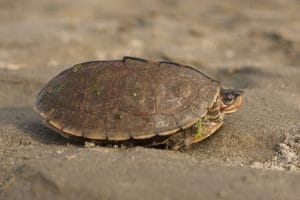Pangshura tentoria (Indian tent turtle)
Home > Turtle Database > Pangshura tentoria (Indian tent turtle)

The Indian tent turtle (Pangshura tentoria) is a freshwater species found across parts of South Asia. Known for its tent-like shell shape, this turtle is both colorful and adaptable, often seen basking along riverbanks and streams.
Native Turtle Species Map – Find Turtles by Region
Scientific Classification
Kingdom: Animalia
Phylum: Chordata
Class: Reptilia
Order: Testudines
Family: Geoemydidae
Genus: Pangshura
Species: Pangshura tentoria
Common Names
Indian tent turtle
Tent turtle
This Hilarious Turtle Book Might Know Your Pet Better Than You Do
Let’s be real—most turtle care guides feel like reading a textbook written by a sleep-deprived zookeeper.
This one’s not that.
Told from the snarky point of view of a grumpy, judgmental turtle, 21 Turtle Truths You’ll Never Read in a Care Guide is packed with sarcasm, sass, and surprisingly useful insights.
And hey—you don’t have to commit to the whole thing just yet.
Grab 2 free truths from the ebook and get a taste of what your turtle really thinks about your setup, your food choices, and that weird plastic palm tree.
It’s funny, it’s honest, and if you’ve ever owned a turtle who glares at you like you’re the problem—you’ll feel seen.
Identification
Description
This turtle has a high-domed shell that rises like a tent, giving it its name. The carapace is olive to dark brown with yellow or orange patterns. Its plastron is yellow with dark markings. The head often has bright red or orange streaks behind the eyes.
Sexual Dimorphism
Females are usually larger and have a flatter plastron. Males have longer, thicker tails and a more concave plastron.
Check more turtles from the Pangshura genus
Native Origin and Distribution
Geographical Range
Found in northern and central India, Bangladesh, and parts of Nepal. Major river systems like the Ganges, Yamuna, and Brahmaputra are their primary range.
Preferred Habitat
They prefer slow-moving rivers, streams, and oxbow lakes with soft bottoms and plenty of basking spots. They are often seen on logs or rocks sunning themselves.
Behavior
Feeding Habits
Omnivorous. They eat aquatic plants, fruits, insects, snails, and small fish.
Predators
Juveniles are preyed on by birds, large fish, and snakes. Adults may fall prey to crocodiles and humans.
Reproduction
Breeding Season
Typically from March to June, right before or during early monsoon.
Reproductive Method
Oviparous. Females lay 4–10 eggs in sandy banks. Incubation lasts around 70–90 days.
Conservation
Extinction Status
Listed as Least Concern by the IUCN.
Threats
Habitat destruction, pollution, river damming, and illegal pet trade are major threats.
Conservation Measures
Protected under Schedule I of the Indian Wildlife Protection Act. Some breeding and awareness programs are in place.
Economic Importance
Sometimes caught for the pet trade or local use, but not widely used for food or trade due to its protected status.
Interesting Facts
The tent-like shape of the shell helps the turtle stay streamlined in flowing water.
They are excellent swimmers and can stay underwater for long periods.
Bright head stripes help in species recognition during mating.

About Author
Muntaseer Rahman started keeping pet turtles back in 2013. He also owns the largest Turtle & Tortoise Facebook community in Bangladesh. These days he is mostly active on Facebook.














